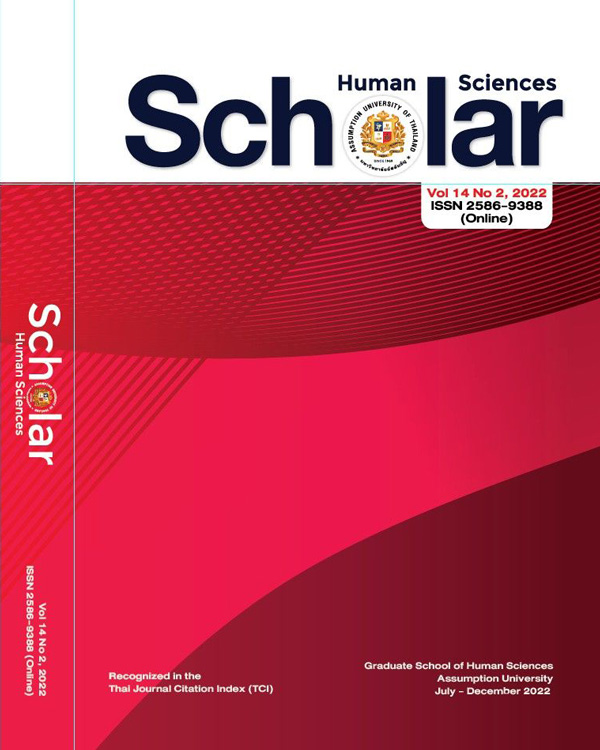THE DEVELOPMENT OF INSTRUCTIONAL LEADERSHIP STRATEGIES FOR TAEKWONDO INSTRUCTORS OF TAEKWONDO DOJANGS IN THAILAND
Keywords:
Instructional Leadership; Strategy, Taekwondo;Abstract
This research aims to develop the instructional leadership strategies for Taekwondo instructors of Taekwondo dojangs in Thailand by exploring the desirable and current instructional leadership components for Taekwondo instructors. Additionally, analyzing the needs of instructional leadership and the current teaching environment regarding instructional leadership for Taekwondo instructors. This descriptive research used two methods, qualitative and quantitative methods. There were 630 Taekwondo instructors as a sample of population of 8,596 Taekwondo instructors in Thailand. Questionnaires and strategic evaluation forms were the instruments to accomplish the research objectives. Descriptive statistic consisted of Mean, Frequency, Percentage, PNIModified, SWOT analysis, TOWS analysis and validation from the experts. The research findings presented the desirable instructional leadership for Taekwondo instructors had the highest average value, supporting student learning as a sub-component with the highest value while effective communication with the lowest value. The current instructional leadership for Taekwondo instructors presented a high average value, supporting student learning with the highest value, whereas vision and goal have the lowest value. Instructional leadership needs were vision and goal, creating good environment for learning, develop teaching career, effective communication, developing curriculum, support student learning, and wide knowledge, respectively. The strength included wide knowledge, supporting student learning, developing curriculum, and effective communication, whereas the weakness was vision and goal, creating good environment for learning and develop teaching career. The opportunity concerned technological and social factors while economic and political factors were threats. As a result, instructional leadership strategies for Taekwondo instructors of Taekwondo dojangs in Thailand comprised of seven strategies.
References
Altschule, J., & Watkins, R. (2014). A Primer on Needs Assessment: More Than 40 Years of Research and Practice. New Directions for Evaluation. 2014(144), 5-18.
Andrews, R. L., & Basom, M., R. (1990). Instructional Leadership: Are women principals better? Principal. 70(2), 38-40.
Armstrong, J. S. (1990). Review of Corporate Strategic Planning, Journal of Marketing, 54, 114-119.
Davis, G., A. & Thomas, M., A. (1989). Effective School and Effective Teacher. Boston: Allyn and Bacon.
Findley, D., & Findley, B. (1992). Effective School: The Role of the Principal. Contemporary Education. 63(2), 102-04.
Glickman, C. (1990). Supervision of Instruction: A Development Approach. (2nd ed.). Toronto, ON Allyn and Bacon.
Hallinger, P. & Murphy, J. (1986). Instructional Leadership in Effective Schools. The Educational Resources Information Center.
Healey, N. M. (1994). The transition economies of central and eastern Europe: A political, economic, social and technological analysis. The Columbia Journal of World Business, 29(1), 62-70.
Scholar: Human Sciences, ISSN 2586-9388, Vol.14 No.2 (Jul.-Dec. 2022)
Hoy, A., W. & Hoy, W., K. (2009). Instructional Leadership, A Research-Based Guide to Learning in Schools. New York: NY; Pearson.
Hoy, A., W. & Hoy, W., K. (2013). Instructional Leadership, A Research-Based Guide to Learning in Schools. Pearson, Fourth Edition.
Koontz, H., & Weihrich, H. (1988). Management. New York: McGraw-Hill.
Kukkiwon (2011). Taekwondo Textbook. Seoul, Korea: Kim Joong-Young.
Kukkiwon (2012). Taekwondo Master Course Textbook. Seoul, Korea: Kukkiwon.
McEwans, E. (1998). Seven Steps Effective Instructional Leaderships. California: Cousin press, Inc. Fidler.
Rothwell, W. J., & Kazanas, H.C. (1992). Mastering the Instructional Design Process. San Francisco: Jossey-Bass.
Rutherford, W. (1985). School principals as effective leaders. Phi Delta Kaplan, 67(1), 31-34.
Thompson, A. A., Strickland, A. J. & Gamble, J. E. (2007). Creating and Executing Strategy-Concepts and Cases, (15th Edition). USA: McGraw-Hill/Irwin.
Wheelen, T. L. & Hunger D. J. (2012). Strategic Management and Business Policy. (13th ed.). Upper Saddle River, New Jersey: Pearson.
World Taekwondo Headquarters (2012). Taekwondo Textbook. Seoul, Korea: Kim Joong-Young.




